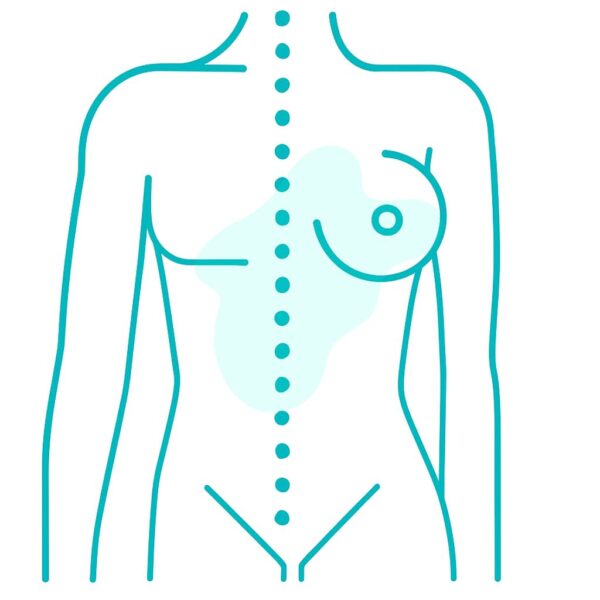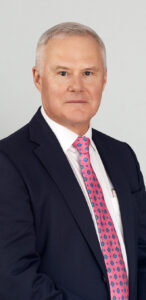- What is MTF Breast Augmentation?
- Why individuals consider MTF Breast Augmentation?
- Am I a Suitable Candidate for MTF Breast Augmentation?
- What to Expect During Your Consultation
- Choosing the Right Implants
- Surgical Approach and Techniques
- Recovery and Aftercare Support
- Risks and Potential Complications of MTF Breast Augmentation Surgery
- FAQs About MTF Breast Augmentation
- Considering MTF Breast Augmentation with Dr Gary Kode
- Further Reading
MTF Breast Augmentation using implants is a surgical procedure that forms part of gender affirmation for some transfeminine individuals. At Dr Gary Kode’s Melbourne practice, the focus is on providing respectful, individualised care and clear information to support decision-making.
What is MTF Breast Augmentation?
MTF (male-to-female) Breast Augmentation involves surgically placing breast implants to increase breast volume and alter chest appearance to align with a patient’s gender identity and personal goals. This procedure is typically considered when hormonal therapy alone has not resulted in the desired breast development. The implant-only technique does not involve fat transfer or other procedures.
Why individuals consider MTF Breast Augmentation?

Breast development through hormone therapy can vary from person to person. Some individuals experience some breast growth, while others may find their chest remains relatively flat. Differences in skin elasticity, chest width, and underlying muscle structure may also affect breast shape and development.
Breast implants may be an option for individuals seeking additional volume or a different chest shape that aligns with their gender expression. This surgical option can support those whose goals are not met through hormone therapy alone.
At his Melbourne practice, Dr Gary Kode provides personalised information, surgical planning, and supportive care for patients considering breast implants as part of their transition.
Am I a Suitable Candidate for MTF Breast Augmentation?
You may be a suitable candidate for MTF Breast Augmentation with implants if you meet the following criteria:
- Stable Gender Identity: You identify as a transgender woman and have a persistent, well-documented history of gender dysphoria or gender incongruence.
- Completed or Undergoing Hormone Therapy (Optional): While not mandatory, many patients undergo at least 12–18 months of oestrogen therapy prior to surgery to allow for breast tissue development and skin softening, which may optimise surgical outcomes.
- Good General Health: You are in overall good physical health, with no uncontrolled medical conditions (such as diabetes or hypertension) that may increase surgical risk.
- Non-Smoker (or Willing to Quit Temporarily): Smoking affects wound healing and increases the risk of complications. Patients should be smoke-free for several weeks before and after surgery.
- Stable Weight: Significant weight fluctuations can affect results. Suitable candidates are close to their goal weight and maintain a stable body composition.
- Skin Quality: Sufficient skin elasticity is important for supporting an implant and achieving a optimal postoperative result.
- Realistic Expectations: You understand the potential outcomes, limitations, and risks of surgery.
- No History of Breast Disease or Active Infections: Pre-existing breast abnormalities or infections should be addressed and resolved prior to surgery.
- Fully Informed and Committed to the Surgical Process: You are prepared for the consultation, pre-operative, and post-operative stages, including recovery time, follow-up visits, and potential future revision surgeries.
- Age Requirements: Most candidates are over 18 years old, although this may vary depending on the surgeon’s policy and individual circumstances.
Dr Gary Kode will conduct a thorough medical history, physical assessment and discussion of your goals to determine if this surgery is appropriate for you, during your consultation.
What to Expect During Your Consultation
Consultations with Dr Gary Kode are conducted in person, offering patients the opportunity to discuss their goals and ask questions in a private and professional setting. The consultation typically involves:
- Anatomical Assessment: Evaluation of the chest wall, including skin quality, underlying tissue, and body proportions relevant to implant placement.
- Discussion of Goals: Patients are urged to share their preferences regarding breast size and appearance. Visual references may assist communication.
- Implant Options: Information is provided about available implant types, including differences in shape, texture, and cohesivity. Sizing tools may be used to help guide the decision.
- Surgical Overview: Dr Kode explains the procedure, including incision location and implant pocket options, tailored to each individual’s anatomy.
- Risks and Considerations: A clear outline of potential risks is provided, such as implant movement, asymmetry, and the possible need for future revision surgery.
Dr Kode’s Melbourne practice is designed to support informed decision-making with a focus on respect, sensitivity, and continuity of care.
Choosing the Right Implants
Implant selection is tailored to each individual’s anatomy, preferences, and goals. Dr Gary Kode takes a detailed, patient-specific approach to planning, considering both physical characteristics and desired outcomes.
Key factors include:
- Size: Implant size is selected based on chest dimensions and skin capacity. Options range from slight volume increases to more noticeable changes.
- Shape: Round implants are often chosen for patients with low amounts of breast tissue, as they can provide upper volume. Anatomical (teardrop) implants may be discussed if a more gradual slope is preferred.
- Profile (Projection): Implants vary in how far they project from the chest wall. Higher profiles may be suited to narrower chests, while moderate profiles offer a broader appearance.
- Surface Texture: Smooth implants are generally used, as they can allow more movement within the implant pocket.
- Impant filling: Implants are filled with either saline (sterile saltwater) or silicone gel.
- Saline implants feel firmer and may show rippling, especially in patients with a lower body fat percentage. If they rupture, the body absorbs the fluid.
- Silicone gel implants feel more like breast tissue and are available in varying firmness levels. Softer gels move more, while firmer gels hold their shape and reduce rippling.
Dr Kode will guide you through the options available, helping you understand which implants may be appropriate based on your anatomy and preferences.
Surgical Approach and Techniques
MTF Breast Augmentation procedures with Dr Gary Kode are performed at fully accredited private hospitals in Melbourne, including Glenferrie Private Hospital and Masada Private Hospital. These facilities offer advanced surgical environments with high standards of patient safety and comfort.
Surgical steps typically involve:
- Anaesthesia:
- All procedures are carried out under general anaesthesia, with a qualified anaesthetist overseeing your care throughout the operation.
- Incision Placement:
- A incision is made in the inframammary fold (under the breast crease) to reduce scar visibility and optimal implant positioning.
- Implant Pocket:
- Subglandular placement (above the chest muscle) is frequently selected for transgender patients, as it offers increased implant projection and a rounded upper breast appearance.
- Submuscular or dual-plane techniques may also be considered for patients with limited soft tissue coverage or specific surgical goals. These approaches will be discussed during your consultation with Dr Kode.
- Keller Funnel Use:
- A no-touch technique using a sterile funnel allows for invasive placement of the implant, potentially reducing bacterial exposure and trauma to tissues.
Throughout the procedure, Dr Kode performs all key steps and maintains a consistent focus on patient safety, sterility, and surgical care from start to finish.
Recovery and Aftercare Support
Recovery is an important part of the overall surgical process and is closely monitored by Dr Gary Kode and his team. While each individual heals differently, the following outlines a general recovery timeline for MTF Breast Augmentation:
- First 48–72 Hours: Swelling, bruising, and tightness are expected. Discomfort is typically managed with prescribed or over-the-counter medication, depending on individual needs.
- Week 1: Light walking is beneficial for circulation. Patients may be able to return to non-strenuous activities or desk-based work, depending on comfort and mobility.
- Weeks 2–3: Swelling may continue to fluctuate. Light daily activities can often be resumed, but heavy lifting and vigorous movement should still be avoided unless advised otherwise.
- Weeks 4–6: Most patients begin gradually returning to regular routines. Exercise involving the upper body should be delayed until cleared by Dr Kode during follow-up reviews.
- Long-Term Care: Ongoing post-operative appointments are scheduled to assess healing progress, monitor implant position, and provide guidance on scar management and overall outcomes. Dr Kode remains involved in patient care throughout the recovery period.
Aftercare protocols may include:
- Wearing a supportive bra to maintain implant position.
- Hypafix tape is used for 3 months after surgery.
- Silicone-based products for scar management are used if allergy to the tape develops.
- Massage techniques may be advised for specific cases.
- Avoiding nicotine and certain medications to optimise healing.
Patients are supported throughout with access to advice, dressing changes if needed, and scheduled post-operative assessments at Dr Gary Kode’s Melbourne clinic.
Risks and Potential Complications of MTF Breast Augmentation Surgery
All surgical procedures carry risks, and it’s important to be fully informed before proceeding. During your consultation, Dr Gary Kode will discuss the specific risks relevant to your individual circumstances. Potential complications may include:
- Infection at the incision site or around the implant.
- Bleeding or haematoma (collection of blood).
- Changes in nipple or breast sensation, which may be temporary or, in rare cases, long-lasting.
- Implant malposition or asymmetry, which may require revision surgery.
- Capsular contracture – the formation of tight scar tissue around the implant, possibly affecting shape or comfort.
- Seroma – fluid accumulation around the implant.
- Delayed wound healing or poor scar formation.
- Implant rupture or leakage, which may necessitate implant replacement.
- Anaesthetic risks, including adverse reactions.
- Unsatisfactory aesthetic outcome, which may or may not require further procedures.
- Interference with mammography, depending on implant placement.
These risks will be discussed in detail during your consultation, along with strategies used to reduce potential complications. It’s important to follow all pre- and post-operative instructions provided by Dr Kode and his surgical team to support healing.
Important considerations:
- Implants are not lifetime devices and may require replacement or revision in the future.
- Patients with thinner skin or limited existing tissue may experience implant edge visibility or rippling.
- Realistic expectations are crucial. Outcomes vary based on anatomy, healing processes, and long-term tissue changes.
At every stage, Dr Gary Kode places a strong emphasis on patient education and informed consent, make sure patients have all the information they need to make decisions based on complete, transparent information.
FAQs About MTF Breast Augmentation
Considering MTF Breast Augmentation with Dr Gary Kode
If you are exploring Breast Augmentation as part of your gender affirmation process, a consultation with Dr Gary Kode can provide individualised information based on your goals, medical history, and available options. This appointment is an opportunity to ask questions, understand what the procedure involves, and receive guidance in a supportive clinical setting.
At his Melbourne-based practice, Dr Gary Kode, Specialist Plastic & Reconstructive Surgeon, provides comprehensive, patient-centred care tailored to individual goals and needs. His focus is on supporting patients through every stage of the journey, from consultation to surgery to post-operative follow-up, in full compliance with AHPRA guidelines.
If you are considering breast augmentation as part of your gender affirmation journey, a personal consultation with Dr Gary Kode can provide valuable insights and help you explore your options in a respectful, professional environment.
Further Reading
- Read more about Labiaplasty Melbourne
- Read more about Breast Augmentation Melbourne


